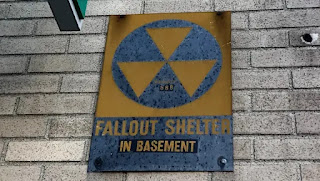Spatial Awareness and Old Gadgets
What do we miss out on when we fail to notice?
I recently re-read a brilliant piece by author Elizabeth Stice in Front Porch Republic: The Power of Place: Payphones.
Stice is a self-described "payphone flaneur." In other words, she traverses areas off the beaten path in search of old payphones. This new hobby, she explains, has significantly augmented her sense of place and spatial awareness.
Here are just a few payphones that Stice has photographed:
You can find a plethora of such photographs on Stice's Instagram page, @phoningpalmbeach. She updates this account regularly, with her last post from just a day ago.
From Stice:
The value in seeing payphones is the way it develops a practice of seeing. So often we are driving or walking down streets, unaware of what serves us no purpose or where we aren’t heading. Looking for things forces you to notice things.
I'll admit: I shut off my peripheral vision when traveling to work, or even when going to meet a friend. I am, in many ways, a utilitarian walker, with my sights set on the destination, and the destination alone. But, in doing this, I am missing out on my surroundings: trees, people, architecture, animals, and, yes, even relics from the past.
Do you ever notice these signs?
 |
| Fallout shelter sign on building |
These are, of course, relics from the Cold War. During a time of collective paranoia about a potential nuclear holocaust, these signs indicated that a building had a basement that could, if needed, function as a fallout shelter. Surely, you've come across at least a few.
Sadly, though, much like the payphone, these signs are being torn down and discarded, as their utility and practical use has obviously waned.
I was, however, pleased to discover Fallout Five Zero, a site dedicated to keeping the memory of these once ubiquitous signs alive.
 |
| Remnant from a fallout shelter sign on Bishop Cheverus School in East Boston. |
 |
| My new Coleman Hawkins cassette (The Golden Hawk, 1979). |
These cassettes have, no doubt, been accruing dust for decades. By listening to them today, I am, in a way, keeping them alive and breathing.
My main extrapolation here, I suppose, is that we benefit from 1. being cognizant of our surroundings and 2. appreciating what has been forgotten.
My father recently reminded me of this Ernest Hemingway quote: "Every man has two deaths, when he is buried in the ground and the last time someone says his name."
Let us strive to keep our communities - payphones, fallout shelter signs, and all - alive...

.png)


Yes! Think of the books and authors that occupy the dustbin of time. You can buy an old book (in good condition), perhaps from 1900, or so, for a few bucks. The author, once famous and highly credentialed, now resting in oblivion; that is, until rescued and brought back to life.
ReplyDelete